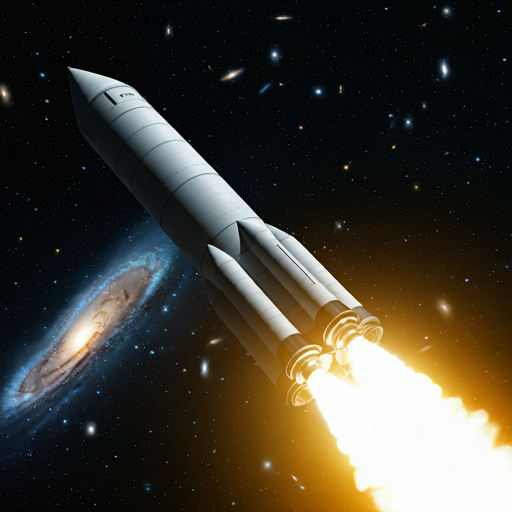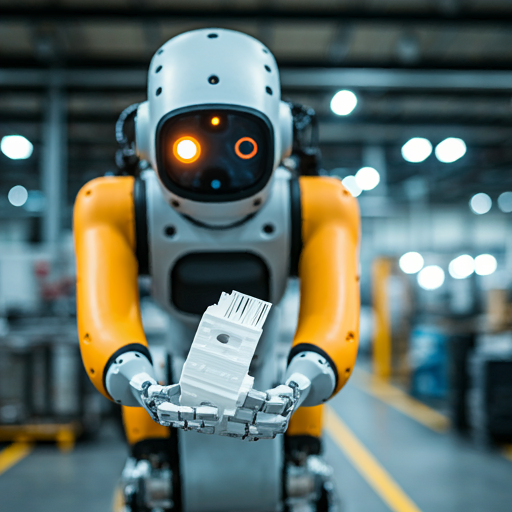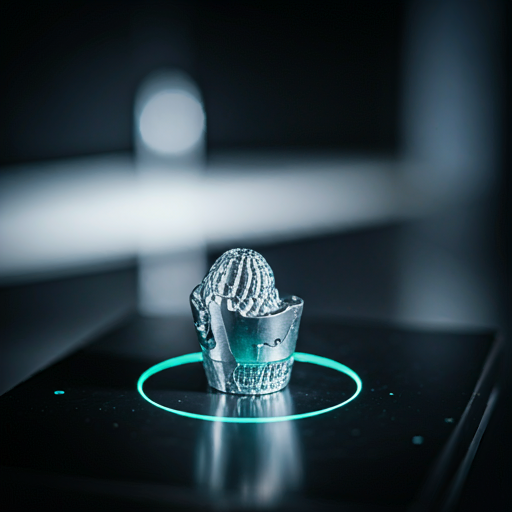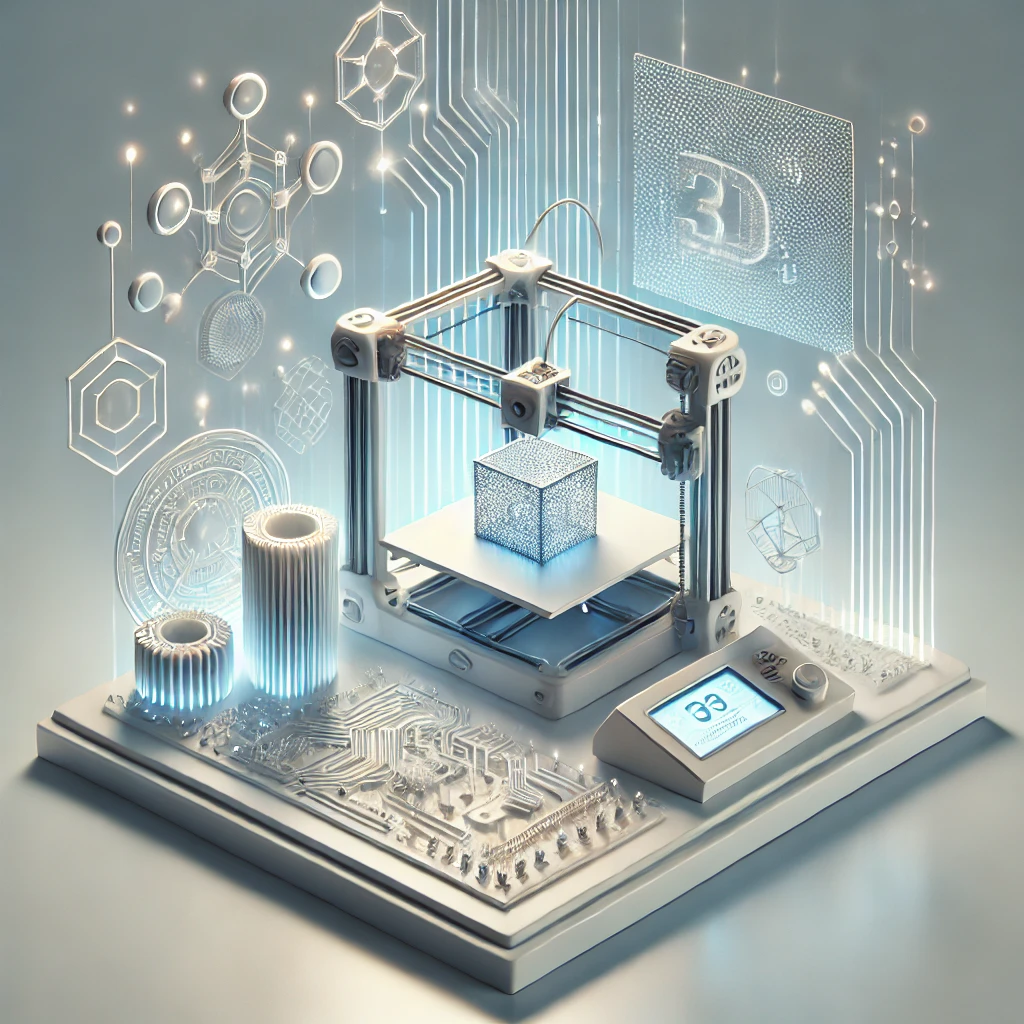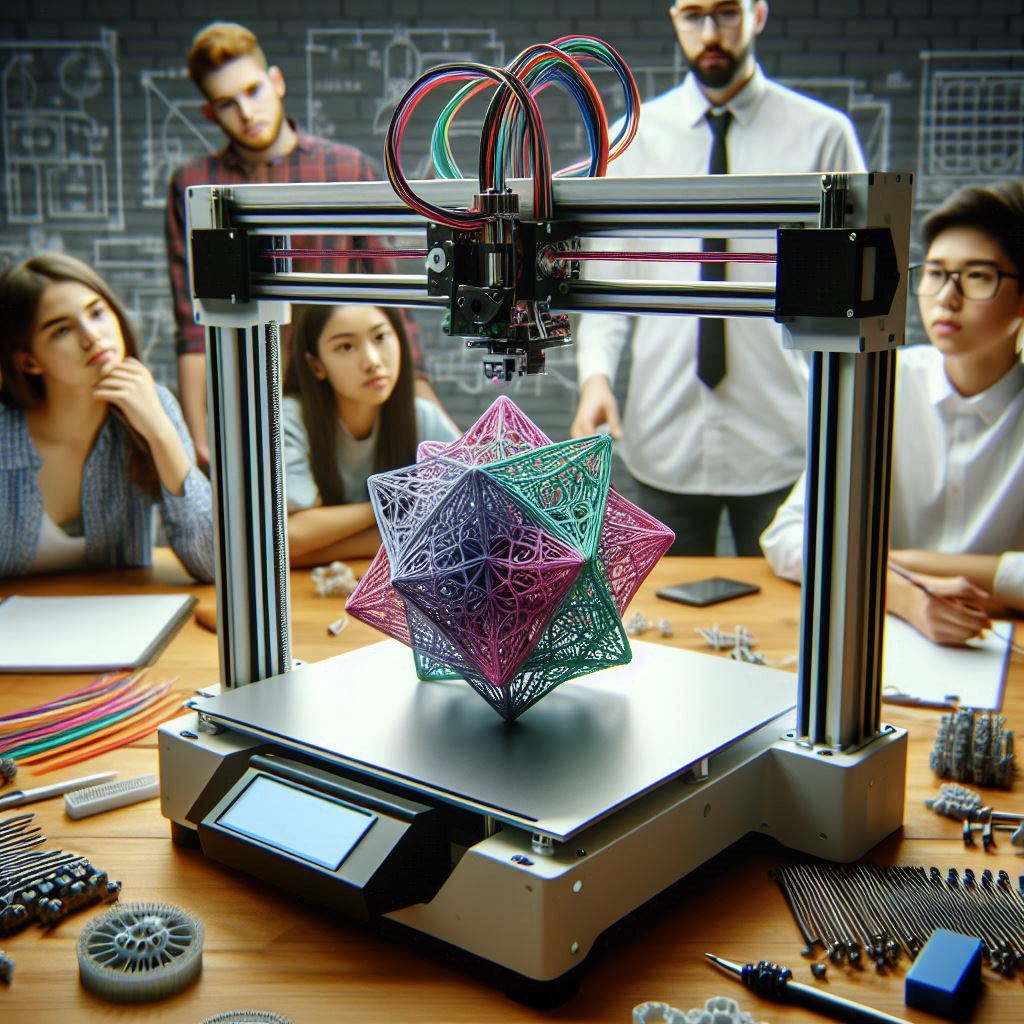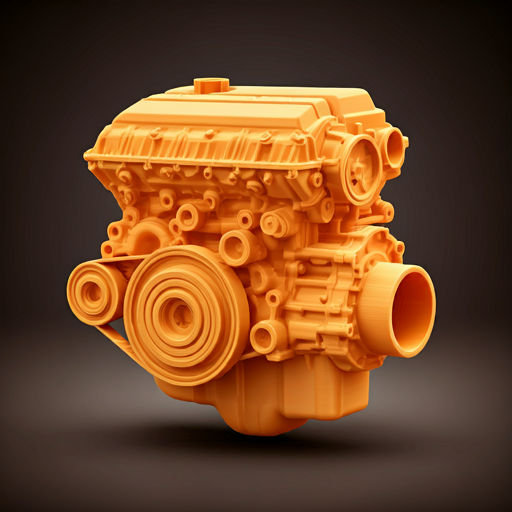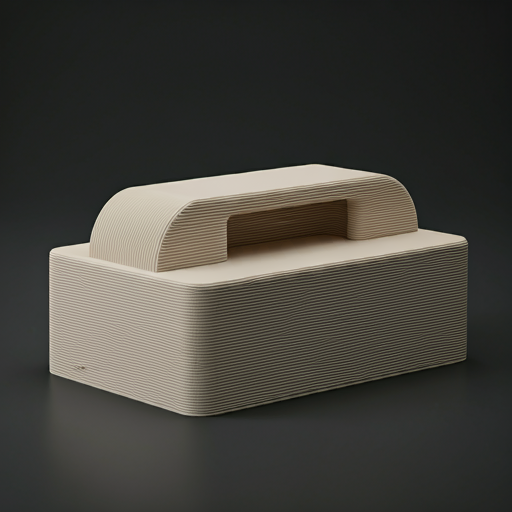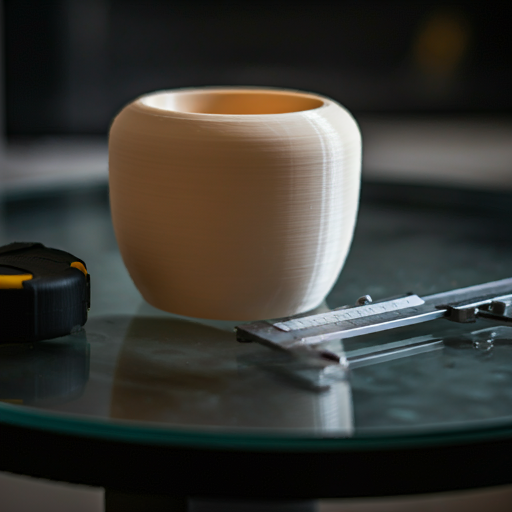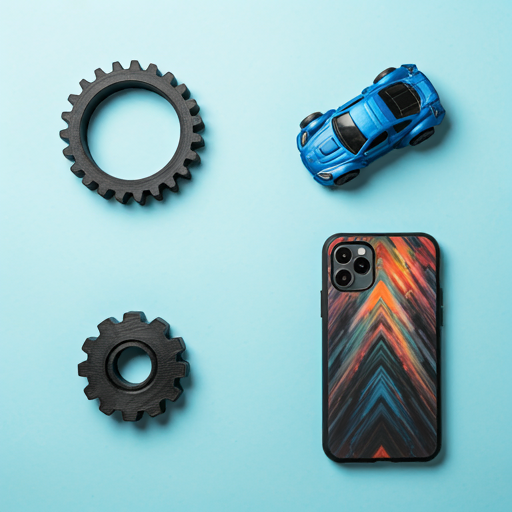
What is SLA 3D printing ?
SLA 3D printing (Stereolithography)
Stereolithography (SLA) 3D printing is an advanced additive manufacturing technique that uses a UV laser or other light sources to cure liquid photopolymer resin into solid plastic with high precision and fine detail. The process involves creating a digital 3D model, slicing it into thin layers, and selectively curing each layer of resin in a vat to build the object layer by layer. Known for its ability to produce smooth surfaces and intricate designs, SLA is widely used for applications such as prototyping, dental models, jewelry, and detailed engineering parts. SLA's versatility extends to a broad range of photopolymer resins, offering various mechanical properties, colors, and transparencies to suit different needs. This technology is particularly valued for its capability to create highly accurate and finely detailed parts, making it indispensable in fields requiring meticulous craftsmanship and precision.
-image.jpg)
How does SLA 3D Printing Works ?
Lets delve into the steps for SLA 3D printing to understand it better . Here are detailed steps given below :
1. Design and Preparation:
The SLA 3D printing process begins with the creation of a digital 3D model using Computer-Aided Design (CAD) software. This model represents the object to be printed and is converted into an STL (stereolithography) file format, which approximates the surfaces of the 3D object using triangles. The STL file is then imported into slicing software, which virtually slices the model into thin horizontal layers. This software also generates a set of instructions, known as G-code, which guides the 3D printer on how to construct each layer. Additionally, the software designs any necessary support structures to ensure that overhanging parts of the model are properly supported during the printing process.
2. Printing Process :
In the printing phase, the SLA 3D printer utilizes a build platform that is submerged just below the surface of a vat filled with liquid photopolymer resin. A UV laser or another light source, such as a DLP projector, is precisely controlled to selectively cure the resin. The light source traces the cross-section of the object onto the surface of the resin, hardening it where it touches. After the first layer is cured, the build platform moves downward (or upward in some designs) by a distance equal to the layer thickness, typically between 25 to 100 microns. A re-coating blade or similar mechanism spreads a new layer of liquid resin over the previously cured layer. This process of curing and layering continues, with the UV light curing each new layer in succession, bonding it to the layers below, until the entire object is fully formed.
3. Post-Processing :
Upon completion of the printing process, the build platform is raised to lift the newly formed object out of the resin vat. The printed object, now partially cured, is carefully detached from the build platform. To ensure the object reaches its optimal mechanical properties, it undergoes a post-curing process. This involves placing the object in a UV curing chamber, where it is exposed to additional UV light, further hardening any remaining uncured resin and enhancing the object's strength and stability. Support structures, which were used to stabilize the model during printing, are manually removed or dissolved. Finally, additional finishing steps, such as sanding, painting, or coating, may be performed to achieve the desired surface quality and aesthetic appearance, resulting in a highly detailed and precise final product.
Overview of Industrial and Desktop SLA 3D Printing
Industrial SLA 3D Printing

Industrial SLA 3D printing excels in producing large-scale, high-precision parts with advanced materials and high throughput, making it ideal for demanding applications in aerospace, automotive, healthcare, and industrial manufacturing. These printers feature significantly larger build volumes, allowing for the creation of bigger parts or multiple smaller parts simultaneously, and are designed for high throughput to produce large quantities of parts with consistent quality. Industrial SLA printers also support a wide range of specialized resins, including high-performance materials that offer enhanced mechanical properties, heat resistance, and chemical resistance.
Desktop SLA 3D Printing

Desktop SLA 3D printing offers a compact, cost-effective, and user-friendly solution that is suitable for small businesses, hobbyists, educators, and designers. These smaller, more affordable printers bring high-resolution 3D printing within reach of a broader audience. Despite their compact size, desktop SLA printers deliver excellent resolution and surface finish, making them ideal for producing detailed and intricate parts. They are designed for ease of use, featuring intuitive interfaces and simplified maintenance, which allows users with varying levels of expertise to operate them effectively. Desktop SLA printers are perfect for rapid prototyping, creating custom parts, miniatures, artistic projects, and educational purposes.
Comparison between Industrial FDM 3D printer and Desktop FDM 3D printer.
Our SLA 3D Printing Capabilities
| Requirement | Specification |
|---|---|
| Maximum build size | 345.6 * 194.4 * 400 MM |
| Standard lead tome | 4 business days |
| Dimensional Accuracy | ± 0.15mm |
| Layer height | 25-100 um |
Materials for SLA 3D Printing
1. Standard Resins
Standard resins are widely used for general-purpose applications. They provide good surface finish, fine details, and are relatively easy to work with. These resins are ideal for creating visual prototypes and parts that do not require high mechanical performance.
- Clear Resin : Offers a transparent finish, useful for models requiring clarity or light transmission.
- White/Black/Grey Resin : Available in different colors, these resins are used for creating detailed and aesthetic prototypes.
2. Engineering Resins
Engineering resins are designed for parts that need enhanced mechanical properties such as increased strength, toughness, and heat resistance. They are suitable for functional prototypes and end-use applications.
- Durable Resin : Similar to polypropylene, offering low friction and high elongation for flexible and wear-resistant parts.
- High-Temperature Resin : Can withstand high temperatures, making it ideal for parts exposed to heat.
3. Flexible and Elastic Resins
Flexible and elastic resins provide rubber-like properties, suitable for parts requiring flexibility and elasticity. These resins are ideal for producing parts that need to bend, compress, or stretch.
- Flexible Resin : Soft and pliable, used for ergonomic grips, gaskets, and seals.
- Elastic Resin : Highly stretchable and resilient, ideal for wearable devices and components that need to return to their original shape after deformation.
4. Specialty Resins
Specialty resins are formulated for specific applications and offer unique properties.
- Dental Resins : Biocompatible and certified for use in dental applications, such as creating models, surgical guides, and orthodontic devices.
- Castable Resin : Designed for investment casting, it burns out cleanly without leaving ash residue, ideal for jewelry and metal casting.
- Bio-Compatible Resin : Suitable for medical applications requiring direct contact with the human body, used in surgical tools and implants.
| Resin | Description |
|---|---|
| Basic grey resin | Mattle surface finish and high detail |
| Tough resin abs like | Good dimensional accuracy and low shrinkage.It is also suitable for prototyping test models. |
| Clear resin | Has a semi-transparent apperance |
| Flexible resin | With different Shore hardness material for more rigid flexible parts. |
| Castable resin | Suitable for casting purposes , Produces very low/no ash after casting. |
| High temperature resin | Has high stiffness and excellent temperature resistance. |

Design Guidelines for SLA 3D Printing
Designing for SLA (Stereolithography) 3D printing involves considerations to ensure optimal print quality, accuracy, and structural integrity. Here are some key design guidelines for SLA 3D printing:

Support Structures :
- Overhangs and Bridges : Design with consideration for overhangs greater than 45 degrees. Use support structures generated by the slicing software to provide stability during printing. Where possible, orient the model to reduce the need for excessive supports, which can affect surface finish and increase post-processing time.
2. Feature Size and Resolution
- Minimum Feature Size : Ensure features are larger than the minimum recommended size (typically around 0.2 mm) to ensure they can be accurately reproduced. Choose an appropriate layer thickness (typically between 25-100 microns) based on the desired balance between print resolution and speed.
3. Wall Thickness
- Minimum Wall Thickness : Maintain a minimum wall thickness to ensure structural integrity. Typically, this is around 0.5 mm to 1 mm, depending on the material and part size.
4. Orientation
- Optimal Orientation : Orient the model to minimize the number of overhangs and ensure that critical features are printed accurately. Consider the build platform orientation for minimizing supports and maximizing build volume usage.
5. Surface Finish and Details
- Surface Orientation : Plan for the orientation that best suits the surface finish requirements of your part. Vertical surfaces generally have better resolution than horizontal ones due to the layering process. Ensure text and fine details are of sufficient size and depth to be accurately reproduced.
6. Clearances and Tolerances
- Clearances : Design assemblies with appropriate clearances to ensure parts fit together smoothly after printing. Account for shrinkage and dimensional accuracy in your designs, especially for functional parts. Test prototypes for fit and function before final production.
7. Material Considerations
- Material Selection : Choose the appropriate SLA resin based on mechanical properties, color, and post-processing requirements. Different resins have varying strengths, flexibility, and durability.
8. Escape Holes
- Including escape holes in your SLA designs is essential for allowing uncured resin to drain during printing. These holes prevent suction forces that can distort the shape of the part or cause resin to remain trapped inside cavities. Ensure escape holes are sufficiently sized and located to facilitate proper resin drainage without compromising the structural integrity or aesthetics of the final printed part.
9. Designing Holes
- When designing holes for SLA 3D printing, consider the resolution of the printer and the chosen resin to ensure holes are accurately reproduced. Aim for holes with diameters slightly larger than the nozzle size to compensate for any shrinkage during curing.
| Feature | Recommended Size |
|---|---|
| Unsupported walls | 1.0 mm |
| Supported walls | 0.5 mm |
| Minimum feature size | 0.2 mm |
| Minimum hole diameter | 0.5 mm |
| Minimum escape hole diameter | 4.0 mm |
Accuracy of SLA 3D Printing
SLA 3D printing is known for its high accuracy and precision, making it suitable for applications that demand fine details and intricate geometries. The accuracy of SLA printing is primarily influenced by several factors:
- Layer Thickness : SLA printers can achieve very thin layer resolutions, typically ranging from 25 to 100 microns (0.025 to 0.1 mm). Thinner layers result in smoother surfaces and finer details.
- Resolution of Light Source : The precision of the UV laser or DLP projector used in SLA printing significantly impacts accuracy. These light sources selectively cure the resin, tracing the shape of each layer with high precision.
- Material Properties : Photopolymer resins used in SLA printing can affect dimensional accuracy. Factors such as shrinkage during curing and material properties like viscosity and curing behavior can influence the final dimensions of the printed part.
Benefits of SLA 3D Printing
SLA 3D printing offers several significant benefits that make it a preferred choice for various applications:

- High Precision and Accuracy : SLA printers can achieve very fine layer resolutions, typically ranging from 25 to 100 microns. This allows for the creation of detailed and intricate designs with smooth surfaces and sharp features.
- Excellent Surface Finish : The curing process of photopolymer resins in SLA printing results in parts with high surface quality and fine detail resolution. This makes SLA prints suitable for applications where aesthetics and smooth textures are crucial.
- Wide Range of Materials : SLA printers support a variety of photopolymer resins, including standard, engineering-grade, flexible, and specialty materials such as dental and castable resins. This versatility allows for the production of functional prototypes, end-use parts, and specialized components across different industries.
- Complex Geometries : SLA printers can produce complex geometries, including intricate internal structures, overhangs, and undercuts, without the need for additional supports in some cases. This capability expands design possibilities and reduces post-processing efforts.
- Reduced Material Waste : Unlike subtractive manufacturing methods, SLA printing is an additive process where material is only used where needed, minimizing waste and optimizing material usage.
Limitations of SLA 3D printing
Despite its many advantages, SLA 3D printing also has several limitations that may affect its suitability for certain applications:

- Material Limitations : Parts printed with SLA technology often require extensive post-processing. This includes removing support structures, cleaning residual resin using solvents like isopropyl alcohol, and sometimes post-curing to ensure optimal mechanical properties and surface finish. These steps can add time and complexity to the production workflow.
- Build Size and Scaling : SLA printers are typically limited in build volume compared to other 3D printing technologies like FDM (Fused Deposition Modeling). This restricts the size of parts that can be produced in a single print job, requiring larger parts to be segmented and assembled post-printing.
- Material Properties and Handling : Photopolymer resins used in SLA printing can be sensitive to environmental factors such as UV light exposure and temperature fluctuations. Proper storage and handling are crucial to maintain resin properties and prevent premature curing or degradation.
- Support Structures : While SLA printers can produce complex geometries, parts with significant overhangs or unsupported features may still require support structures. Removing these supports can be time-consuming and may leave marks or require additional finishing.
- Reduced Material Waste : Unlike subtractive manufacturing methods, SLA printing is an additive process where material is only used where needed, minimizing waste and optimizing material usage.
- Initial Cost and Accessibility : Compared to some other 3D printing technologies, SLA printers and the associated materials can be more expensive. This initial investment may be a barrier for small businesses or individuals looking to adopt the technology.
Applications of SLA 3D Printing
SLA (Stereolithography) 3D printing has diverse applications across various industries due to its ability to produce high-resolution, detailed parts with excellent surface finish. Some key applications include:
- Prototyping : SLA printing is widely used for rapid prototyping in product development cycles. It allows designers and engineers to quickly iterate designs, validate concepts, and test functionality before moving to mass production.
- Jewellery and Accessories : The high detail and smooth surface finish of SLA prints make it ideal for creating intricate jewelry designs, including rings, earrings, and pendants. Castable resins used in SLA can be burned out cleanly during casting processes, making it suitable for jewelry manufacturing.
- Dental and Healthcare : SLA 3D printing is used in dentistry for producing dental models, surgical guides, crowns, and bridges. Biocompatible resins are available for direct use in creating orthodontic appliances and dental implants.
- Aerospace and Automotive : In aerospace and automotive industries, SLA printing is utilized for prototyping components, tooling, and functional parts requiring high precision and durability. It helps in reducing lead times and costs associated with traditional manufacturing methods.
- Art and Sculpture : Artists and sculptors use SLA printing to create detailed sculptures, figurines, and art installations. The technology allows them to realize intricate designs that may be challenging or impossible to achieve using traditional methods.
- Engineering and Education : SLA printers are valuable tools in engineering education for teaching principles of design and manufacturing. They allow students to gain hands-on experience in creating prototypes and understanding the capabilities of additive manufacturing.
- Tooling and Manufacturing Aids : SLA printing is employed in creating jigs, fixtures, and molds used in manufacturing processes. These tools aid in assembly, inspection, and quality control, contributing to efficiency and accuracy in production lines.
Conclusion
In conclusion, SLA (Stereolithography) 3D printing stands as a transformative technology with widespread applications across industries. Its ability to deliver high precision, intricate details, and superior surface finish makes it indispensable in prototyping, manufacturing, and creative endeavors. From aerospace and automotive sectors benefiting from rapid iteration and functional part production to healthcare and jewelry industries leveraging biocompatible materials for precise medical devices and intricate jewelry designs, SLA printing continues to push boundaries in innovation. As the technology evolves with advancements in materials and printer capabilities, its role in shaping the future of manufacturing and design remains pivotal, promising continued growth and adaptation across diverse fields.
While SLA 3D printing offers remarkable benefits, it also requires significant investment in various types of printers and materials. If you prefer to focus on your core projects rather than the complexities and costs of SLA 3D printing, our expert team at iamrapid is here to help. Rather than investing in multiple SLA printers, you can rely on us to provide the right technology for your specific use case. Contact us at iamrapid to access our SLA 3D printing services and accelerate your innovation journey. If you found this information useful, kindly share it with your peers who are actively involved in innovation. Let's work together to inspire innovation and drive the adoption of this technology.
While SLA 3D printing offers remarkable benefits, it also requires significant investment in various types of printers and materials. If you prefer to focus on your core projects rather than the complexities and costs of SLA 3D printing, our expert team at https://iamrapid.com is here to help. Rather than investing in multiple SLA printers, you can rely on us to provide the right technology for your specific use case. Contact us at https://iamrapid.com to access our SLA 3D printing services and accelerate your innovation journey. If you found this information useful, kindly share it with your peers who are actively involved in innovation. Let's work together to inspire innovation and drive the adoption of this technology.
